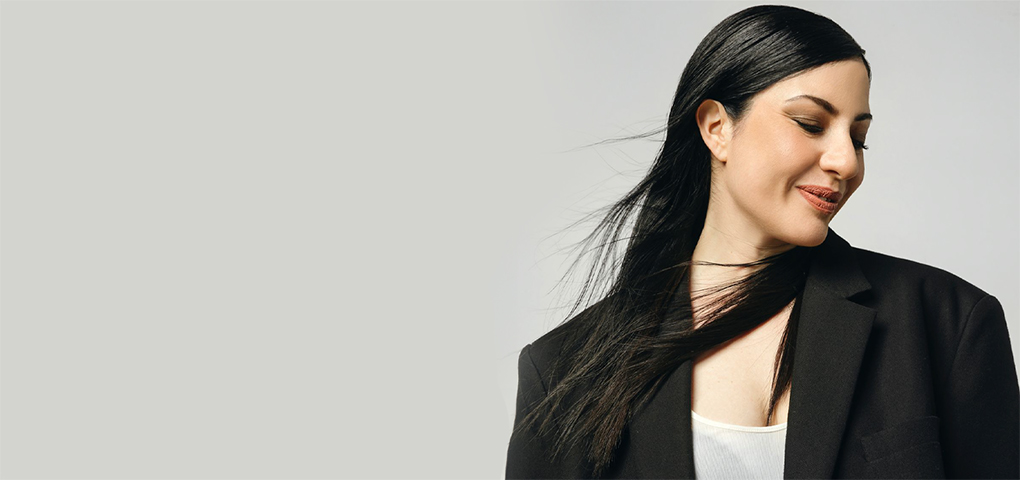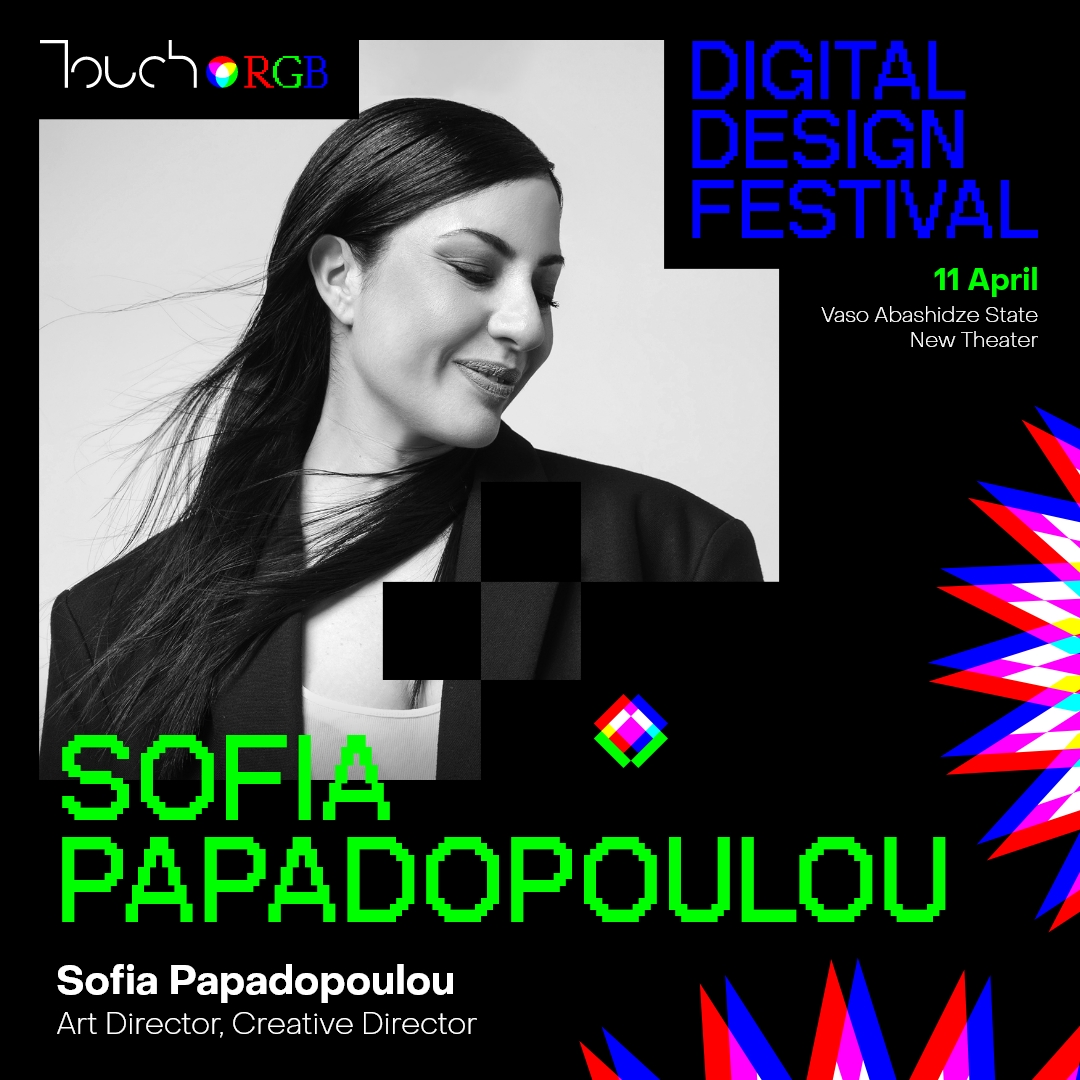With the imminent approach of the Touch RGB festival Tbilisi, we are pleased to provide a preview of the upcoming event. As part of our preparations, we are honored to introduce one of our distinguished speakers. Through an exclusive interview, we aim to showcase her expertise and valuable insights, offering attendees a glimpse into the caliber of discussions that await at the festival.
Sofia, your journey from print to screens and now to 3 dimensions is truly remarkable. Could you walk us through some pivotal moments in your career that have shaped your evolution as a creative powerhouse?
I started off as a graphic designer 17 years back, working in advertising for the first 7. Then left print and advertising, switching to 100% digital design and freelancing working with international teams and clients ever since. The project that changed my career’s trajectory was doing personal digital branding for Dot Lung, which allowed me to come up with a method I applied on all other projects that followed. How to see them and treat them as if they were people, attributing to them human characteristics that allow deeper and more meaningful connections with their audiences.
A conference back in 2017 was the reason that I was introduced to the immersive tech space (AR/VR) and has fascinated me and pushed me to start looking into it and self-educating ever since. Last year I made my entrance in the industry.
Taking all the knowledge and experience from my creative endeavours over the years, I’m extremely excited for this new era of communication that’s coming, where I’ll be able able to implement it all.
As an independent creative collaborating with international teams and agencies, what strategies do you employ to foster innovation and maintain a cutting-edge approach to design?
As a friend recently said, the most important ‘strategy’ is to remain curious. To never stop learning. Never stop experimenting. And the best place to do that is your own personal brand, website and whichever other implementations might involve.
Personal branding and website development have become crucial platforms for showcasing one's creative prowess. How can aspiring designers leverage these tools effectively to stand out in a competitive landscape?
As David Ogilvy, father of advertising, once said ‘If you can't advertise yourself, what hope do you have of advertising anything else?’ Your personal brand and website are the absolute showcase of your capabilities in the world and your aspirations in the industry. It’s a playground where you can experiment without limitations, learn from the process and implement those learnings into client projects.
Let's shift gears to your talk, "Boosting Creativity with AI: Navigating the Ethical Frontier." In what ways do you believe AI can enhance human creativity, and what ethical considerations must designers bear in mind when integrating AI into their workflows?
AI needs to be seen as a creative partner that can push creativity to unprecedented heights exactly because it demonstrates powers beyond human capabilities. It is a technology that recognizes the languages of nature and turns them into tangible outcomes.
Having said that, it is also a technology that has the power to change things not only on a creative level but on a bigger societal level as well. There are still many blind spots when it comes to legislation and ethical considerations. As designers working for big brands, we are currently setting the foundations and an example on how it’s being used and what kind of values we are communicating through it. There’s a great responsibility that comes with this role.
AI has the potential to revolutionize the creative process, but it also raises important questions about privacy, bias, and the future of work. How do you envision striking a balance between innovation and ethical responsibility in the realm of AI-driven design?
Indeed. There are many questions that there’s no answer to in history, and this is the reason we should be thoughtful about how we use it and what we do with it. I can’t say what the future will be but if I’m asked to envision it it would be as I mentioned before as a partner and not as a replacement, putting human values at the forefront at all times.
AI was created from humans for humans. If we depend on it to a level that we cannot untangle though that’s when we risk the fear of being replaced. Especially when it comes to design or other hard-related skills professions.
It is in our hands to shape this future, so my suggestion would be to constantly self-educate on the developments, capabilities but also dangers of technology to be able to use it in the best possible way.
As someone who has collaborated with top-notch digital agencies and garnered international recognition for your work, what advice would you offer to budding creatives aspiring to make their mark in the industry?
My biggest advice would be to believe in themselves. To believe in their dreams, set clear goals and work hard towards them. You can never be sure when ‘success’ will come. Whatever success might mean to you. You just need to trust the process. And it will.
Interview by Nini Papashvili
Explore more about festival
Design Institute community members can purchase a festival ticket with a 20% discount using the promo code: TOUCHRGB_DESINGINSTITUTE
სხვა ბლოგები












